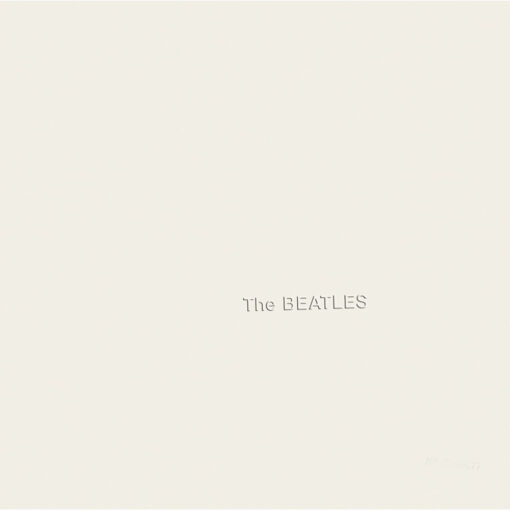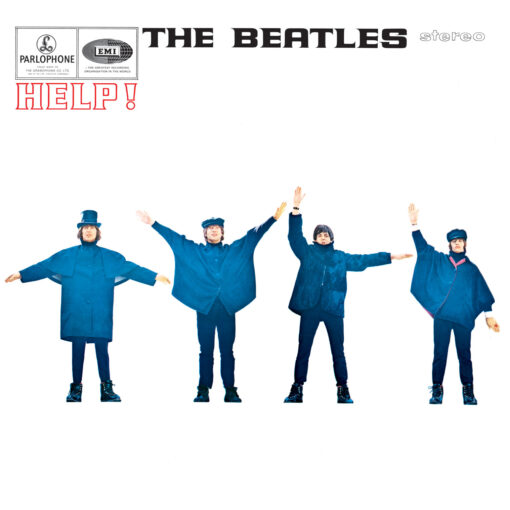The Beatles’ ninth studio album, also known as the White Album, was released on 22 November 1968. It is the band’s only double album. There are no graphics or text on the cover other than the band’s name embossed on the white sleeve. Compared to the vivid artwork on the band’s previous album Sgt. Pepper’s Lonely Hearts Club Band, this cover artwork was intended as a direct contrast. The Beatles’ music is known for its fragmentary style and diversity of genres, including folk, British blues, ska, music hall, and pre-heavy metal. Some critics have since viewed it as a postmodern masterpiece, as well as one of the greatest albums ever.
A total of 30 songs are included on the album, 19 of which were written at the Transcendental Meditation course in Rishikesh, India, between March and April 1968. In those days, the only western instrument available to the band was the acoustic guitar; many of these songs remained acoustic on The Beatles, recorded solo or by part of the band alone. Because of the production aesthetic, the album’s sound was scaled down and less reliant on studio innovation than most releases since Revolver (1966). By keeping each piece of music faithful to a specific genre, the Beatles broke with the band’s tradition of incorporating several musical styles into one song at the time.
Recording sessions began at EMI Studios in London at the end of May 1968 and lasted until mid-October. It was during these sessions that disagreements broke out between the foursome over creative differences and the presence of Yoko Ono, the Beatles’ new girlfriend, who subverted the Beatles’ rule that wives and girlfriends were not allowed in the studio. A series of problems led to Ringo Starr leaving the band for two weeks in August, including producer George Martin taking a sudden holiday and engineer Geoff Emerick suddenly quitting during a session. Tensions continued throughout the following year, leading to the band’s breakup.
Despite 1968’s turbulent political and social climate, the Beatles’ satirical songs were considered unimportant and apolitical by most music critics. In Britain and the United States, it topped the record charts. In either country, no singles were issued, but “Hey Jude” and “Revolution” were released on a single in August 1968. Platinum certification has been awarded to the album by the RIAA. For the 50th anniversary of the album, a remixed and expanded edition was released in 2018.
- Artist: The Beatles
- Release date: November 22, 1968
- Genres: Rock, Pop music, Pop rock, Country music, Hard rock
- Label: Apple Records
The Beatles (White Album) tracklist
DISC 1 – SIDE A
- Back in the U.S.S.R.
(Lennon-McCartney) - Dear Prudence
(Lennon-McCartney) - Glass Onion
(Lennon-McCartney) - Ob-La-Di, Ob-La-Da
(Lennon-McCartney) - Wild Honey Pie
(Lennon-McCartney) - The Continuing Story of Bungalow Bill
(Lennon-McCartney) - While My Guitar Gently Weeps
(Harrison) - Happiness Is a Warm Gun
(Lennon-McCartney)
DISC 1 – SIDE B
- Martha My Dear
(Lennon-McCartney) - I’m So Tired
(Lennon-McCartney) - Blackbird
(Lennon-McCartney) - Piggies
(Harrison) - Rocky Raccoon
(Lennon-McCartney) - Don’t Pass Me By
(Starkey) - Why Don’t We Do It in the Road?
(Lennon-McCartney) - I Will
(Lennon-McCartney) - Julia
(Lennon-McCartney)
DISC 2 – SIDE A
- Birthday
(Lennon-McCartney) - Yer Blues
(Lennon-McCartney) - Mother Nature’s Son
(Lennon-McCartney) - Everybody’s Got Something to Hide Except Me and My Monkey
(Lennon-McCartney) - Sexy Sadie
(Lennon-McCartney) - Helter Skelter
(Lennon-McCartney) - Long, Long, Long
(Harrison)
DISC 2 – SIDE B
- Revolution 1
(Lennon-McCartney) - Honey Pie
(Lennon-McCartney) - Savoy Truffle
(Harrison) - Cry Baby Cry
(Lennon-McCartney) - Revolution 9
(Lennon-McCartney) - Good Night
(Lennon-McCartney)


22 thoughts on ““The Beatles (White Album)” (1968)”